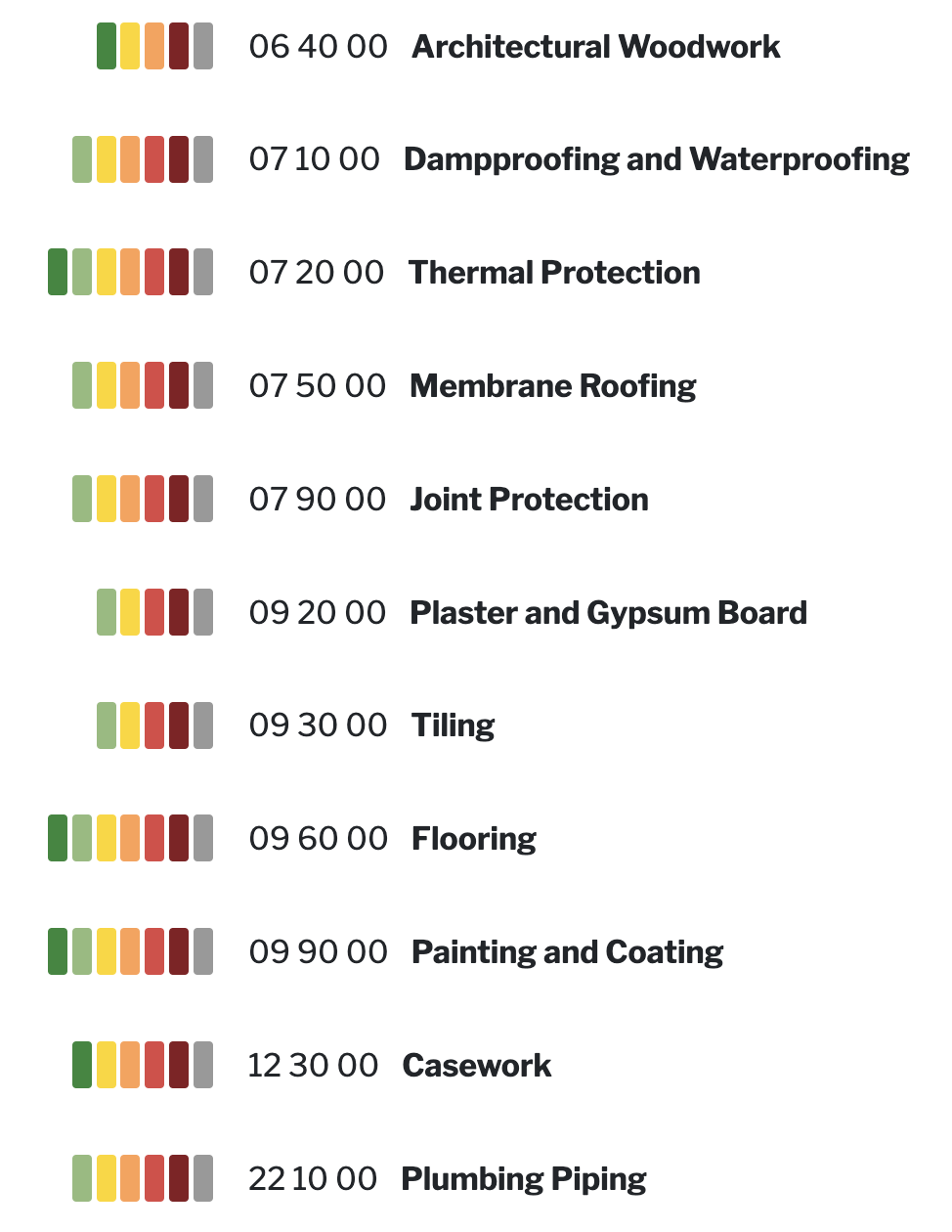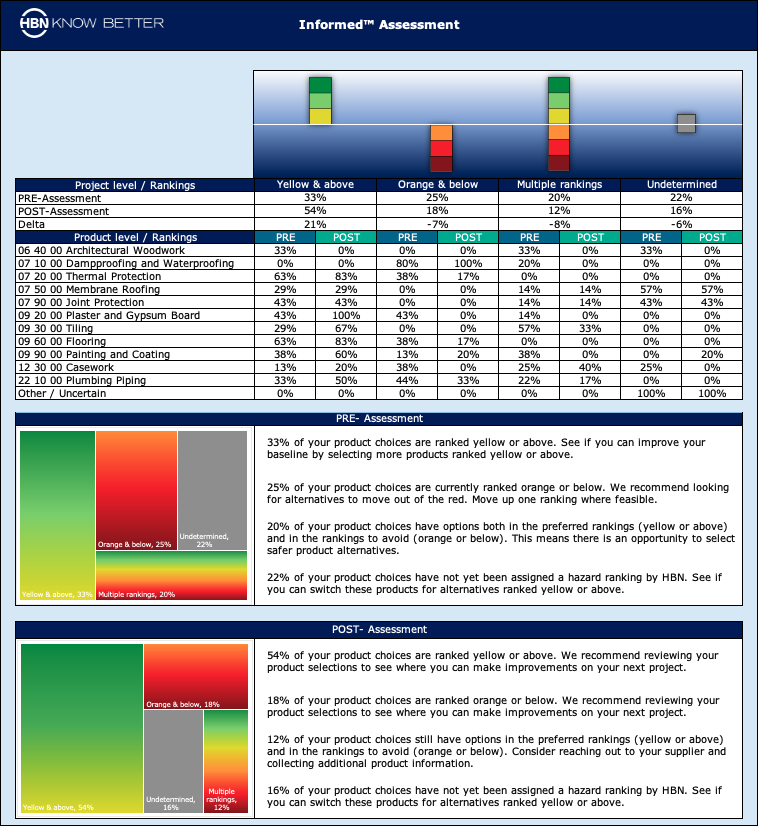The Easy Way to Select Healthier Building Products
Informed™ materials modeling will help you quickly and confidently choose better building products. Save time, money, and errors.
The intuitive red-to-green color ranking compiles decades of comprehensive research about the health impacts of chemicals throughout the product life cycle.
Step up from red — a critical first move. Next, prefer product types ranked yellow and green.
|
Green
|
Best in Class |
|
Light green
|
Better |
|
Yellow
|
Good |
|
Orange
|
Reduce |
|
Light red
|
Eliminate |
|
Red
|
Worst in Class |
Product Guidance
The Product Guidance pages will help you learn at your own pace. Our deep research is translated into simple guidance to build your competency about healthier materials.
Assessment Tools
The Product Explorer maps Product Guidance to CSI MasterFormat™ divisions. Start selecting product types and then see your results on the Project Assessment form. Share your findings with clients and certification programs.



